The core tenets of the work I do with all my clients is developing your vision for the life you’d love and then developing the mindset and strategy to achieve it.
A large part of what is needed in the context of mindset often boils down to choosing the perspective that is most empowering for you in any given moment.
Sometimes this can feel very challenging to do, particularly if your life conditions are demanding or upsetting. I get that. It’s hard for me too in those moments and I promise I’ll blog about some tools for navigating such scenarios soon.
For today, I want to introduce you to the topic of inversion!
It is a bank holiday weekend in Ireland this weekend and Inversion is a fun way of responding to day-to-day challenges that can ease you into a new perspective, almost without you realising that that is what you’re doing. It is also a way of thinking differently that can reveal new insights. Basically, inversion turns things on their head!
Often Inversion is talked about as a thinking tool, a way of exploring the opposite of what you want as a means of finding the way to achieve it. James Clear refers to inversion in this way:
“Inversion is counterintuitive. It is not obvious to spend time thinking about the opposite of what you want. And yet inversion is a key tool of many great thinkers. Stoic practitioners visualize negative outcomes. Groundbreaking artists invert the status quo. Effective leaders avoid the mistakes that prevent success just as much as they chase the skills that accelerate it.”
You can have lots of fun with thinking counterintuitively and it can open up great insights for life, work, relationships, health. If you’d like to explore the power of this thinking approach try this. For any area in which you’d like to improve your levels of success – your exercise routine or diet; an important relationship; a work project, your financial or time management, ask yourself “What could cause this to go horribly wrong?”
The goal is to spell out the exact ways your approach could fail. The idea is to identify challenges and points of failure so you can develop a plan to prevent them ahead of time.
Another great way to have fun with inversion is as a way of doing things differently, shaking up your routine or your approach in some way, so as to allow a new practice or perspective to emerge, which allows a whole new level of success.
A great example of this, that you may be familiar with but never thought of as inversion, is Marie Kondo, author of the best-selling The Life-Changing Magic of Tidying Up. Kondo uses inversion to help people declutter their homes and work spaces. Her famous line is, “We should be choosing what we want to keep, not what we want to get rid of.”
By choosing to retain what “sparks joy” rather than deciding with to give away, it opens up a fresh way to approach the task of decluttering that ultimately makes it much easier.

Let me give you an example from my own life. When I was in my first job in the UK, I had a fabulous colleague, role model and mentor, Janet Jones. I always remember a conversation with her when I was stressed about something and confessed to not sleeping well. She said to me that in such instances in her life she had found that sleeping on the other side of the bed to her normal routine allowed her to sleep better and often she’d wake up with a fresh perspective.
I took on board the suggestion and it worked! And that habit of sleeping the other way around is something I’ve done ever since when I need an easy way to revisit a thorny topic! Often I don’t even try to make my husband swop sides, I simply just go to sleep the opposite way around to normal and see what happens, typically there is a new insight in the morning! Essentially, this is a form of inversion, even though neither Janet nor I knew to call it that at the time.

Are you ready to do some inverting this weekend? Here are some suggestions of ways to give it a go, from Natalie MacNeill’s book Rituals, and me:
- Write or eat with your non dominant hand
- Have your normal breakfast meal for lunch or supper or vice versa
- Take a different route to or from any regular commute – work, the grocery store, a school run
- Wear your partner or best friend’s clothes
- Sleep upside down (i.e. where your feet normally are)
- Read a favorite poem from the last line to the first line
- Pick up the phone to ring someone if you normally would text them
- Get a take-out or try cooking something from a cuisine you’ve never had before
- If you normally work even when it’s a holiday weekend, try taking the rest of the weekend off (here’s why!)
Another alternative offered by MacNeil is simply “to remain open to impulse”. This holiday weekend, see if you can shake up your normal routine by being more spontaneous than usual. If you are passing a shop or see something that catches your eye down a street, go investigate. Strike up a conversation with a stranger or go see a movie you wouldn’t normally choose to watch. If you’re out for a meal, choose something you’ve never had before to eat. The options are endless!
This is where MacNeill says this approach can take you:
“The fresh perspective that comes from a flipped routine, exploring a new route home or taking an impromptu nap in the middle of the day is incredibly powerful. These small acts of switching up the norm might seem trivial, but their effect can trickle down into all areas of your life. …You are sparking a fresh start for your creative, productive and inventive spirit.”
Have fun with inversion thinking and doing activities this weekend and see how they can spark inspiration and creativity and open you up to ideas, people, opportunities and experiences that you might otherwise not notice. Let me know how you get on!
Here’s to you living a life you love!

